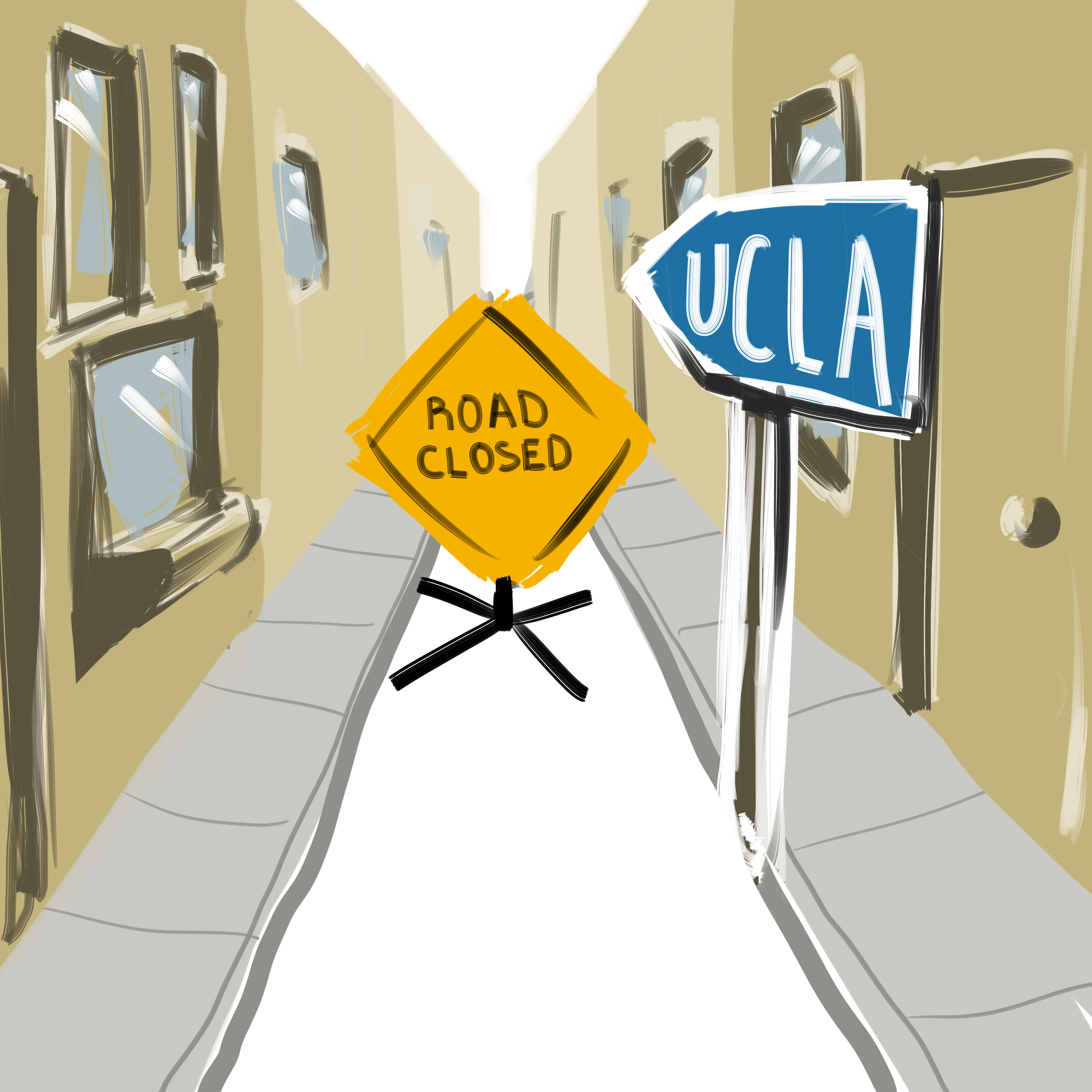Arthur Wang: UCs, CSUs need to improve retention programs for underserved students

(Vivian Tong/Daily Bruin senior staff)
By Arthur Wang
March 3, 2015 12:00 a.m.
In politics, pipelines bring to mind President Barack Obama’s veto. In education, pipelines are important pathways from underserved public schools to the state’s public universities.
At the California State University system, a decade of efforts have proved less-than-stellar, with African American enrollments declining rather than growing in spite of increased outreach to underserved and minority communities.
At the University of California, outreach spending has increased prodigiously since voters banned affirmative action in 1998, resulting in a modest but respectable recovery in minority enrollment in the past decade. These efforts are attempts to bolster diversity and bridge a complex cultural capital divide.
Outreach efforts that encourage qualified but disadvantaged students to apply to the UC should not be ignored. However, they have only done so much to regain disadvantaged student enrollment drops that resulted from the passage of Proposition 209. Working within this framework, the UC needs to improve student retention by increasing funding to organizations such as the Community Programs Office in tandem with outreach efforts to ensure a decade of enrollment gains are not bled out by a leaky pipeline.
Today, the problem for students at both UCs and CSUs is not only getting admitted, but also staying, succeeding and graduating in a timely manner. One might expect that by virtue of gaining admission, any student is equally capable of integrating themselves and succeeding at university. But disadvantaged students, who may be low-income or the first in their family to attend college, are more likely to take longer to graduate, drop out or have trouble succeeding in school. Academic qualifications do not always translate to possession of the particular social aptitude required to navigate the college campus, culture and its people.
UCLA boasts about high graduation rates and low times to get a degree, but underserved minority and first-generation students lag behind on both counts. Inadequate high school preparation and post-admission retention outreach are to blame. Disadvantaged students have a lack of cultural capital compared to their relatively privileged counterparts.
Broadly speaking, cultural capital refers to a sort of “social currency” that is usually associated with particular social classes and their particular ways of living. Individuals with high social capital, for example, may be more skilled at comfortably communicating with adults as peers or wearing the right suit for a given occasion or season.
Discrepancies are established long before students set foot on a university campus, an institution that clearly prefers students from higher class backgrounds. Decades of sociological research have consistently found that higher class students, who usually attend private or well-funded public schools, tend to feel more comfortable and engage themselves more often on college campuses than lower class counterparts. These students are more adept at interacting with faculty, and this success takes form in higher GPAs, greater desire to attain degrees and increased critical thinking, according to UCLA School of Education and Information Studies research.
When I was applying to college, these theories played out in my predominantly working-class public high school. In my senior year, my counselor was tasked to assist around 150 seniors, a daunting number. In addition, the academic diversity of the students forced the counselor to determine which of her students were on the “college-bound” track.
She incorrectly assumed that two of my peers were not college-bound, even though both were accepted to top-tier UCs. This awkward situation is emblematic of how low-income students can be admitted to universities but start on the wrong foot due to paltry college-prep resources.
Even after admission, few resources exist to assist students with the process of understanding college culture and bureaucracy in an institution that benefits the privileged first and foremost. And there are other issues: for example, students of lower-class backgrounds are more likely to be employed in work-study jobs and have less time to study.
UCLA and other UC campuses can bolster assistance to disadvantaged students, starting with increasing financial support for organizations like the CPO. Student leaders of the CPO have failed to pass much-needed funding increase measures for two out of the last three years. The university, rather than cash-strapped students, should foot the bill for improving retention programs.
It’s important to note that a simple cash infusion cannot eliminate the gap’s culturally rooted problems overnight, though. Cultural shifts are gradual and mostly unmoved by riches.
In spite of cultural and institutional obstacles, the UC is one of the nation’s leaders in admitting students from disadvantaged backgrounds. It must not forget, though, that this is an institution of privilege and that the barriers to success do not vanish with the words of an admission letter.

